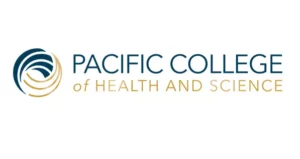Stroke is the third leading cause of death in the United States. This debilitating disease affects more than 700,000 individuals each year (or approximately one person every 45 seconds). It is also a leading cause of serious, long-term disability, confining thousands to wheelchairs and dependency for help in their daily lives.
Complementary and alternative medicines are frequently used to help stroke victims lead normal or semi-normal lives. A pilot study involving Jin Shin treatment revealed that it could improve motor function after patients suffered a stroke. The study involved seven post-stroke individuals with chronic mobility problems. Each participant had reported at least 19 months of problems, and each was randomly assigned to receive eight weeks of Jin Shin treatments. The result: participants noted a significant increase in moderate physical activity levels following their Jin Shin treatments. Researchers concluded that Jin Shin treatments had a positive effect on motor function in individuals who had suffered a stroke.
The Practice of Jin Shin
Jin Shin is the ancient art of bringing body, mind and spirit into unison. Practitioners use gentle, non-invasive touch methods to restore balance to the body’s energy systems and thereby promote the health and well-being of a patient. In practice, the Jin Shin practitioner applies a series of hand placement techniques using 52 energy centers or “Safety Energy Locks” (26 on each side of the body) to restore harmony to body, mind and spirit. By holding specific acupressure points and areas of the body, this unique form of acupressure is able to channel the healing energy more deeply, to balance the underlying causes of physical and emotional disharmonies. Research studies reveal that when Jin Shin is combined with conventional medical treatment, it can help reduce symptoms of pain, nausea and vomiting after surgery, and improve recovery from cardiac procedures.
Are you interested in becoming a certified acupuncture professional?
Visit the links below to explore our specialized acupuncture programs at a campus near you:
What to Expect During a Jin Shin Session
A typical Jin Shin session lasts about one hour. Patients rest comfortably, fully clothed on a cushioned treatment table. The session begins by taking a patient’s pulse to determine if there are any blocked energy pathways. Jin Shin treatments do not involve massaging, manipulating, pressuring or rubbing the body. The practitioner simply makes light contact with fingertips on various body points in specific combinations. The points are held for several minutes until a pulsation is felt. Certain patterns, or flows, are chosen and followed to note any disharmonies. These irregularities are sometimes determined by listening to the pulses. As with many such non-invasive treatments, results are not always immediate. Several sessions are usually required for chronic conditions, however, patients usually feel better after just one or two sessions.
Jin Shin is not a substitute for medical care and is not intended to diagnose, treat, cure or prevent any disease. Consult a medical doctor before undergoing any Jin Shin treatments.
Study Source: P1. Functional improvement after stroke: a role for complementary medicine Theresa D. Hernández, Kristina McFadden, Alicia Segal, Bonnie Ivankovich, Christina Gavito, Shelah Huerta
Featured Posts:

